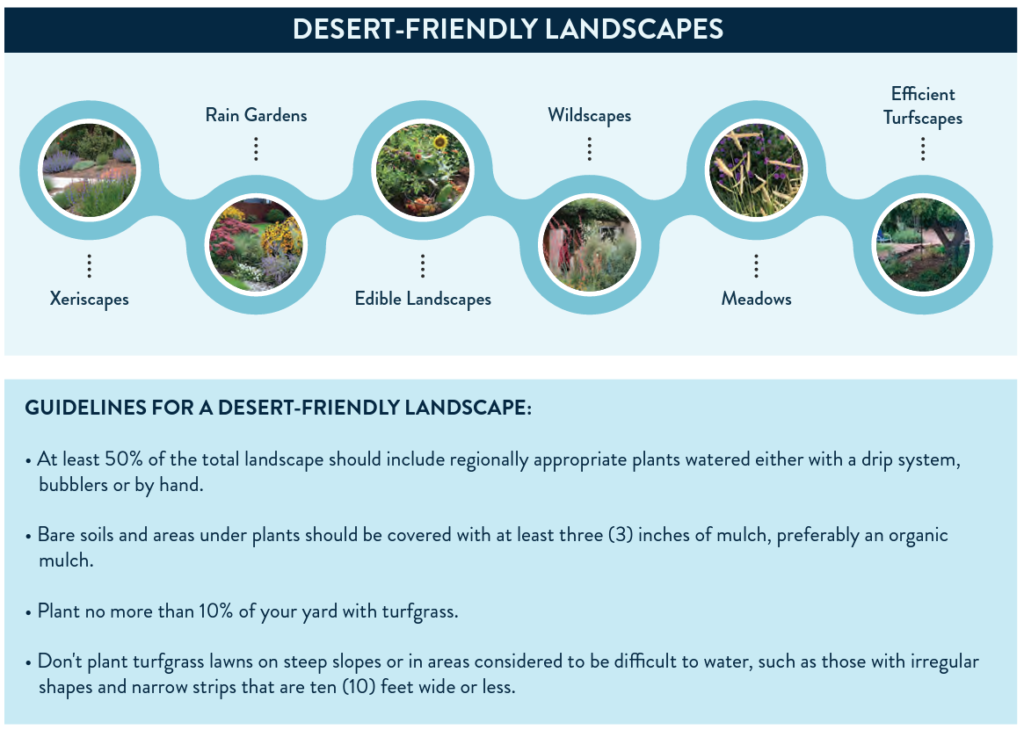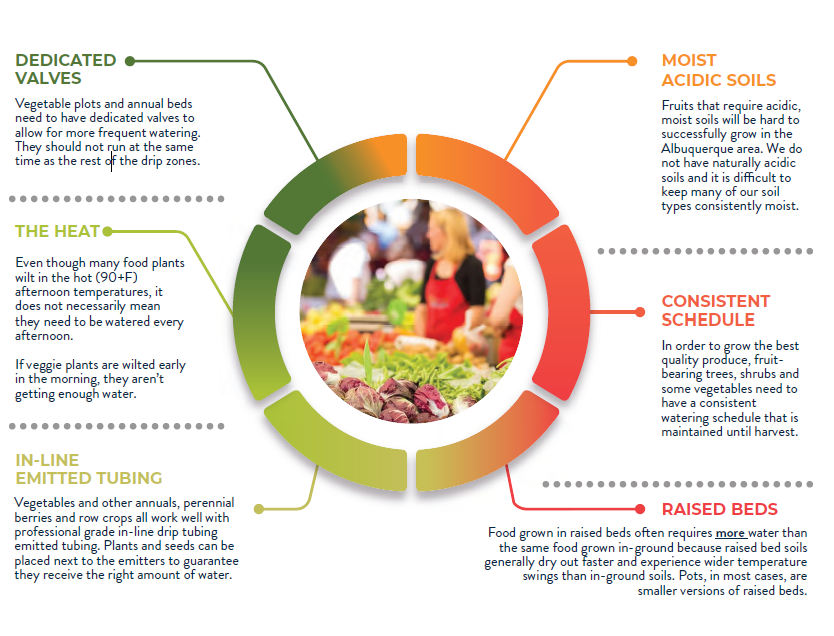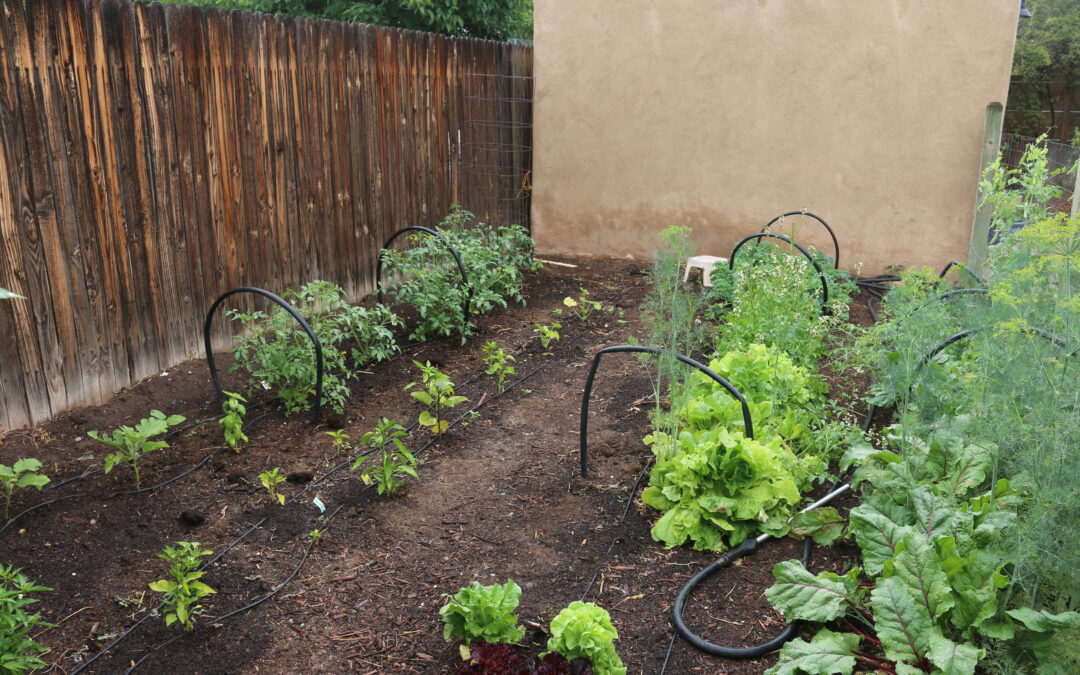The Albuquerque metro area has a wide variety of landscapes. These include desert-friendly landscapes, lush pollinator-friendly xeriscapes and wildscapes or prairie plantings where native grasses and wildflowers bring the feel of a prairie to a yard. Rain gardens are specifically designed to make the most of natural precipitation, while edible landscapes have garden beds or edible plants interspersed throughout them. Efficient turfscapes have smaller areas of turfgrass and diverse plantings. Conventional turfscapes, with large areas of cool-season grasses and high-water foundation shrub plantings, are no longer considered desert-friendly landscapes. The term “desert-friendly” now describes a variety of landscapes that include beautiful, diverse plantings with increased resiliency achieved through efficient watering.

Edible landscapes feature herb, vegetable and fruit-producing plants that can have a wide variety of watering needs. If you choose to grow food in your yard with drip irrigation, in-line emitted tubing is the most efficient way to water. We recommend setting up separate irrigation zones due to the daily watering needs of edible plants in summer. Hand watering is an option if drip irrigation is not possible.

Here are tips for starting a vegetable garden.
- Good soil and regular watering are keys to having a successful garden. In the dry Southwest rich soils don’t form naturally, so you’ll first need to create a good soil and then maintain it.
- Setting up wide garden beds makes the most efficient use of amended garden soil and applied irrigation. John Jeavon’s excellent book How to Grow More Vegetables Than You Ever Thought Possible on Less Land Than You Can Imagine has valuable information about why and how to set up wide beds.
- You may need to break up the soil before planting your first garden. Once the soil is loosened and amended, it’s better to work in new compost with hand tools and to mulch deeply with an organic mulch. Hand tools have advantages. They don’t destroy the living soil the way mechanical tillage does. They also aren’t noisy and don’t smell like exhaust. A great benefit is that you get exercise while using them!
- Drip irrigation is ideal for vegetable beds, and there are numerous ways to set up a good system. If you are using an outdoor hose bib, be sure to include anti-siphon devices, pressure reducers and good filters to keep everything safe and functional.
- Add organic mulch! There are a number of choices for organic mulch.
Here are some good vegetables to plant, based on the season.
- Spring: Try out kale/chard with radish and turnips or try peas with a radish, turnip/carrot combo.
- Summer: Try tomatoes and peppers mixed with herbs and chile. If you want to be nostalgic and adventurous, try the “Three Sisters” — corn, squash and beans. It’s best to choose pole beans, like green beans.
- Fall: Try lettuce, spinach, kale and Swiss chard.
Learn more here:
Easy Edible Plants for the First Time
Vegetable and Herb Gardening in Small Spaces
Vegetable Gardening in the Southwest


